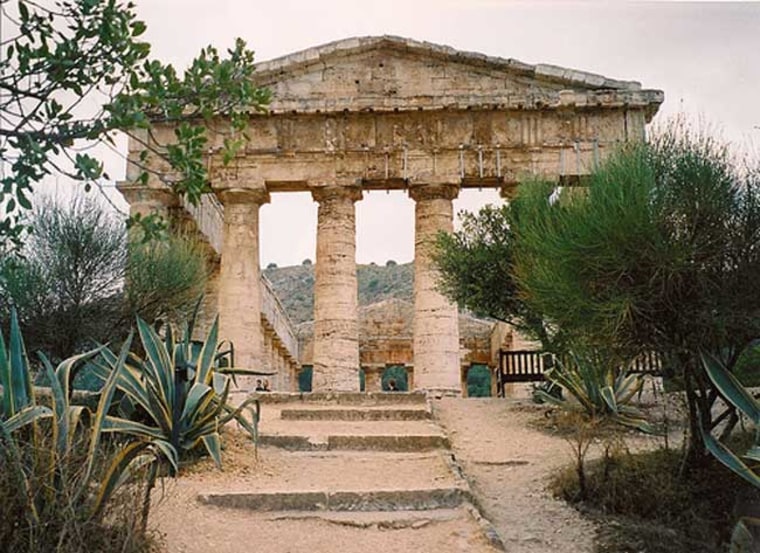Ancient Greeks living in Sicily built their sacred temples to face the rising sun, new research suggests.
Almost all of the temples constructed on the island of Sicily during its Greek period over 2,500 years ago are oriented toward the eastern horizon, according to a new study by Alun Salt, an archaeoastronomer with the University of Leicester, in England.
Though many temples on mainland Greece also line up with the sunrise, it is less frequent on the mainland than on outlying colonies, implying an effort by outlying colonies to strengthen their ties to the home territory, Salt told LiveScience.
Sicily became a Greek state in the 8th century B.C., when the ancient powerhouse founded its first settlement on the Mediterranean island, now a province of Italy. It did not take long for local Sicilians to adopt many of their colonizer's customs, including those related to architecture and religion.
Temples were an important part of life in ancient Greece. Offerings to various gods were commonplace, as were rituals associated with the ancient Olympic Games. Temple ruins now dot the landscape of mainland Greece, with orientation favoring the sunrise in many, but not all.
Of the 41 temples in Sicily that date from the Greek period, however, only one of the doors doesn't face east, Salt found.
The phenomenon of east-facing temples may have been stronger in Sicily simply because doing things the "right" way helped forge a stronger bond with the mainland.
"If you were a Greek living in the Greek homeland, you knew you were Greek. The Greeks in Sicily were Greeks living at the edge of their world. They may have felt they had something to prove," said Salt, who noted that most temples in Sicily were also built on a larger scale than those in Greece proper.
Temple orientation doesn't mean that the sun was an important religious symbol in ancient Greek culture, however.
"It'd make life a lot simpler if it was. There's Apollo, who is associated with Helios the sun god. But the correlation with sunrise seems to be found amongst the temples to all the gods, even ones like Demeter and Kore who are more associated with the underworld," Salt said. "What I was expecting to find was that the temples of celestial gods faced the rising sun and the temples of the chthonic [or underworld] gods didn't. I was completely wrong about that."
There is some evidence that ancient Greeks ritually sacrificed goats or oxen, burning the fat and bones outside the temples so that the smoke would travel to heaven. The timing of their ritual could have affected the astronomical orientation of the temples, Salt said.
"Greek sacrifices tended to happen early in the morning. If that's the case then having the audience [face] west would give the best view. The priest would have been outside the temple, because the altar was outside," said Salt. "So to give the priest an impressive backdrop the temple would be best behind him. If you had the audience facing east then the altar and priest would likely be in shadow."
